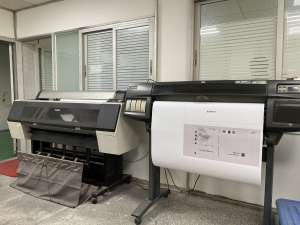As of 2025, the book printing industry has embraced new trends and standards driven by technological innovation, sustainability efforts, and shifting market demands.
If you’re planning to publish your book soon, this guide will help you avoid common pitfalls and inspire fresh ideas for success.
1.Updated Book Printing Standards and Guidelines
Under the European Union’s REACH regulations, hazardous substances in printing inks and adhesives are strictly controlled. Books intended for export to the EU must meet relevant testing standards. Furthermore, the use of plastic lamination for books and packaging is increasingly restricted, with a strong emphasis on adopting biodegradable materials.
The Independent Book Publishers Association (IBPA) has emphasized the importance of adhering to professional standards in book production and maintaining consistent formatting and design elements throughout the book. They recommend paying attention to the essential front matter, such as the copyright of title pages, and grammatical accuracy.
The Book Manufacturers Institute (BMI) has outlined specific manufacturing standards for textbooks, focusing on Durability and binding quality suitable for frequent use. Paper quality that ensures readability and longevity.Compliance with educational requirements for elementary and secondary schools.
Different countries update the new standard of VOCs during the possess of printing:
- The California Air Resources Board (CARB) imposes stricter limits, with VOC content in screen and pad printing inks often restricted to below 100 g/L (approximately 0.8 lbs/gal).
- VOC content in printing inks is often limited to between 5% and 10%, depending on the product type and application in the EU.
- Since 2023 in China, the “Emission Standard of Atmospheric Pollutants for Printing Industry” has been officially implemented. This standard imposes stricter requirements on VOCs emissions from printing enterprises, clarifies the definition of VOCs raw and auxiliary materials, and requires the use of raw and auxiliary materials with low VOCs content.

2.Emerging Trends in Book Printing
Print-On-Demand (POD) and Variable Data Printing are continuing to revolutionize the printing industry by: Reducing inventory costs and waste, Allowing for personalized content, especially in educational materials, Enabling rapid updates to content, aligning with current events or curriculum changes.The technical makes small-batch, highly customized publishing possible.
International organizations like ISO are working toward harmonized VOCs standards worldwide. Modern printing equipment is increasingly equipped with built-in sensors that enable real-time monitoring of emissions, helping facilities meet stricter environmental regulations more efficiently.
Sustainability has become a central focus. Gaining FCS FEFC certification for printing worldwide has become a symbol of product competitiveness for customers, although most countries don’t have specific regulations. Some publishers are experimenting with mycelium—the root structure of mushrooms—as a fully biodegradable alternative to traditional plastic book covers. At the same time, minimalist design is making a comeback, inspired by ultra-lightweight approaches such as the use of Japanese Bible paper, which emphasizes resource efficiency and portability.
New innovations are bridging content and material: plantable books embed seeds into their pages. After reading the book, it can be disassembled and planted into soil, allowing plants to grow. One prominent example is the “Tree Book Tree” project, which beautifully combines storytelling and environmental restoration.
The industry is moving toward zero-waste processes. British publisher Unbound has leveraged AI-driven layout optimization technology to increase paper utilization rates up to 98%, significantly reducing material waste during printing.
Many companies form new hybrid business models by combining print and digital strategies. Hybrid models combine the physical beauty and value of printed books with the convenience, interactivity, or instant access of digital content.Many publishers now sell a physical book and offer a free or discounted e-book version with it.Independent publishers (like Amazon)offering “Buy Print, Get E-book Free” deals on their own websites.
Printed books remain very resilient. Global sales of physical books have been either stable or slightly growing in major markets like the U.S., Europe, and parts of Asia.
3.Summary
As the global printing industry evolves, we will witness a profound shift from stricter environmental regulations and real-time emission monitoring to groundbreaking innovations in sustainable materials and zero-waste processes. Publishers are redefining both form and function. Sustainability is no longer optional.
The future of print is not just about ink on paper — it’s about reimagining the entire lifecycle of a book, a package, a message.
Embracing the change is our core valus. XINYI Printing has 27 years printing experience specializing in custom printing of books, notebooks, board games & game cards, flashcards, children’s books, booklets, brochures, stickers, die-cut items and more, we approach every project with care, always keeping sustainability in mind.
We had passed FCS certifications and used replaced traditional ink with soy-based or water-based inks. We provide one-step service and serve your every need with our equipment and technology. Your final products are assured to be the same as your designs. By paying attention to the latest policies, our excellent sales team will also provide professional advice on our customers’ work in the first time.
Are you ready to be part of the transformation? Let’s embrace sustainable innovation together.




